Are you dreaming of growing your own vegetables and herbs but don’t have much space to work with? A 4×4 raised garden bed might be the perfect solution for you. With a simple DIY project, you can create a beautiful, functional, and accessible garden that maximizes your harvest in a small space. In this blog post, we will guide you through the process of building your very own 4×4 raised garden bed, from choosing the right location and materials to planting, irrigating, and maintaining your thriving garden.
Get ready to transform your outdoor space into a bountiful oasis of fresh vegetables, herbs, and flowers. Let’s dive into the world of 4×4 raised garden beds and explore the steps, tips, and solutions to make your gardening dreams a reality!
Key Takeaways
Maximize your harvest with a 4×4 raised garden bed – easy DIY guide!
Enjoy the benefits of efficient use of space, better soil control and simplified maintenance.
Learn how to build, plant & maintain for maximum growth & success!
Choosing the Right Location for Your 4×4 Raised Garden Bed
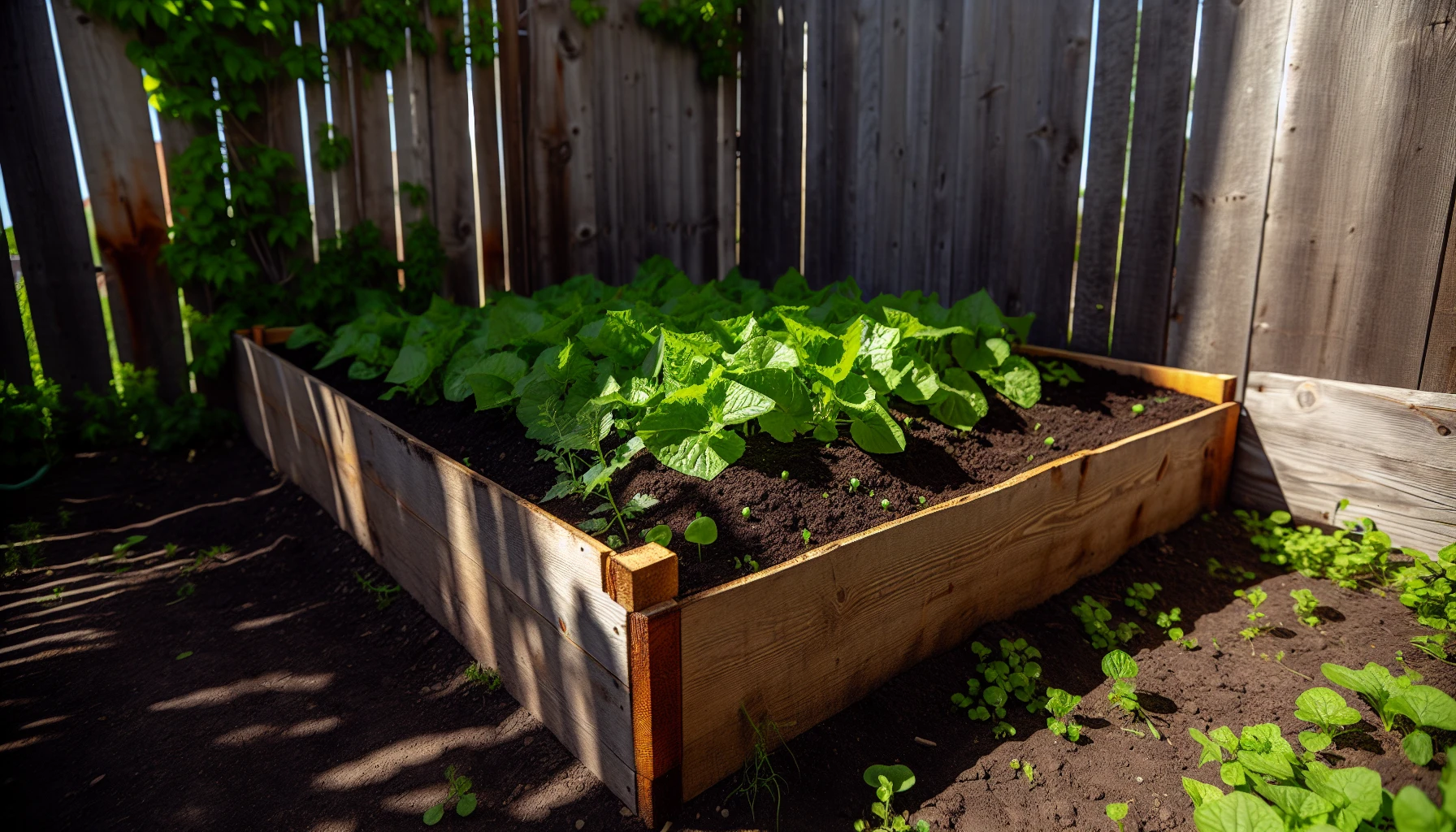
The first step towards a successful garden is finding the perfect location for your 4×4 raised garden bed. You should aim for a level area that receives at least 6-8 hours of sunlight daily, providing your plants with the optimal conditions for growth. Good drainage and ease of access also play a crucial role in preventing problems like wet feet and root rot which can be harmful to your plants. Therefore, before you commence the building of your garden bed, assess your outdoor space carefully and pick a location that satisfies these conditions.
One creative way to make your 4×4 raised garden bed blend seamlessly with your backyard is to match it with your existing fencing. You can also consider using cinder or concrete blocks to provide a strong foundation for your raised garden bed, helping it last for many years to come and preventing plants from getting wet feet. Clearly, the selection of the appropriate location and material plays a key role in ensuring the success of your garden bed.
With the right location and material in mind, you’re one step closer to creating a thriving raised garden bed. Let’s now move on to uncover the multitude of benefits a 4×4 raised garden bed offers, underlining its suitability for both beginner and seasoned gardeners.
Benefits of a 4×4 Raised Garden Bed
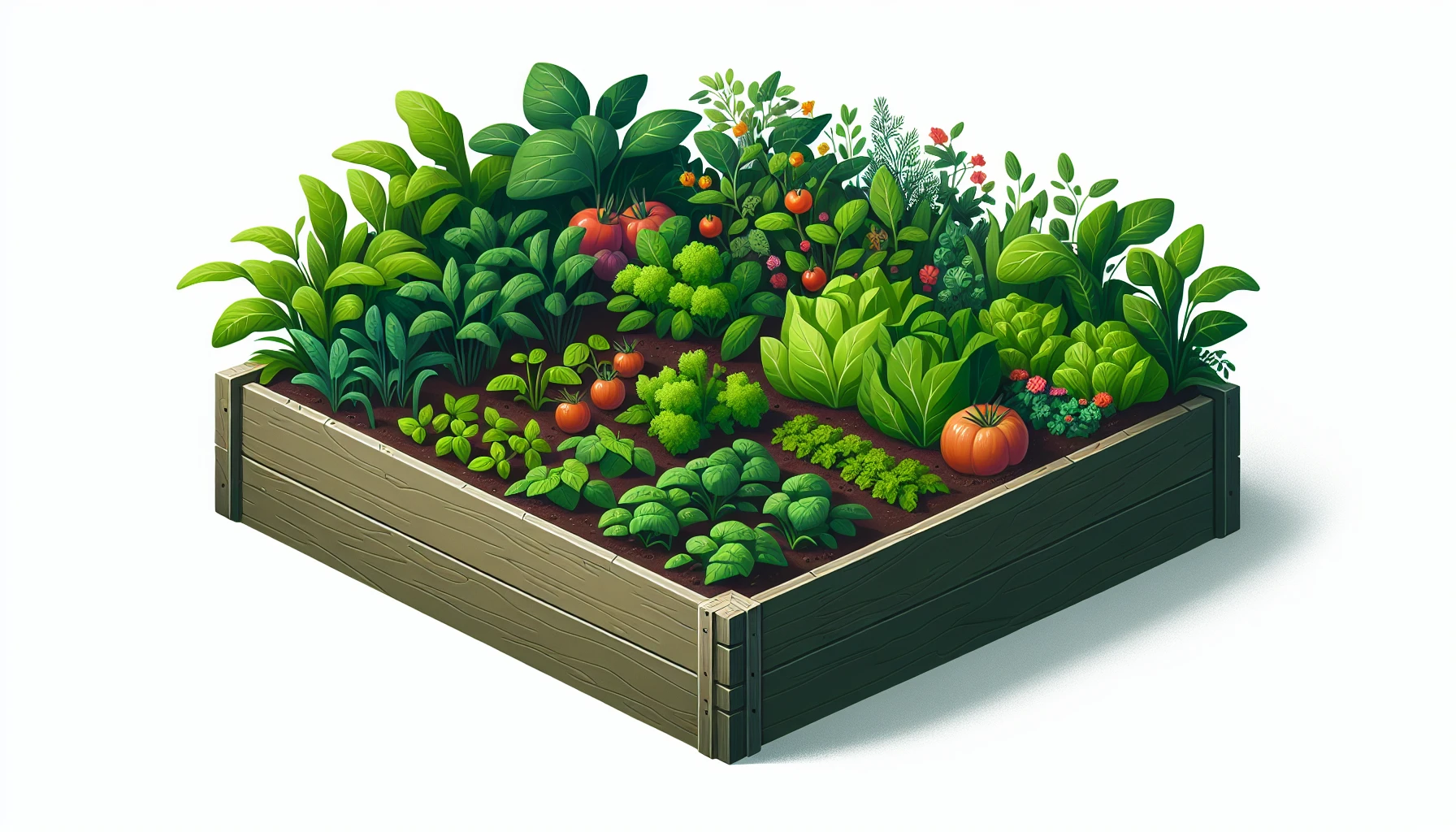
A 4×4 raised garden bed offers plenty of advantages, making it a perfect DIY project for those looking to efficiently use their limited gardening space. With 16 square feet of planting area, you can enjoy bountiful harvests, including root crops, in a compact space. Moreover, a raised garden bed gives you better soil control, allowing you to use a sandy loam garden soil that is organic, natural, and free of peat moss products. This ensures healthy plant roots and, ultimately, a flourishing garden.
In addition to efficient use of space and better soil control, a 4×4 raised garden bed simplifies maintenance. Growing vegetables in a raised garden bed made of cinder blocks provides:
- Improved drainage
- Ability to start planting right away
- Elevated structure that reduces the need for bending and kneeling, making it easier on your back and knees.
As you can see, a 4×4 raised garden bed offers numerous benefits that can help you make the most of your gardening experience.
We now move on to collecting the necessary materials required to construct your personalized raised garden bed.
Materials Needed for a 4×4 Raised Garden Bed
To build your 4×4 raised garden bed, you’ll need:
- Untreated lumber
- Corner connectors
- Screws
- Weed barrier fabric
When it comes to selecting the right type of wood, untreated wood such as cedar, pine, cypress, redwood, hemlock, or other woods that won’t rot quickly are recommended. Avoid treated wood, such as treated lumber, as the chemicals may seep into the soil and affect the food you’ll be eating.
For connecting the corners of your raised bed, Simpson Ties are an excellent choice, providing a neat and tidy look while protecting your boards from damage. Remember to follow guidelines and safety precautions when using pressure-treated lumber in a raised bed, as suggested by the EPA website.
Having assembled all the necessary materials, the next step is to delve into the detailed guide to constructing your 4×4 raised garden bed. We begin with the process of preparing the ground for your garden bed.
Step-by-Step Guide to Building Your 4×4 Raised Garden Bed
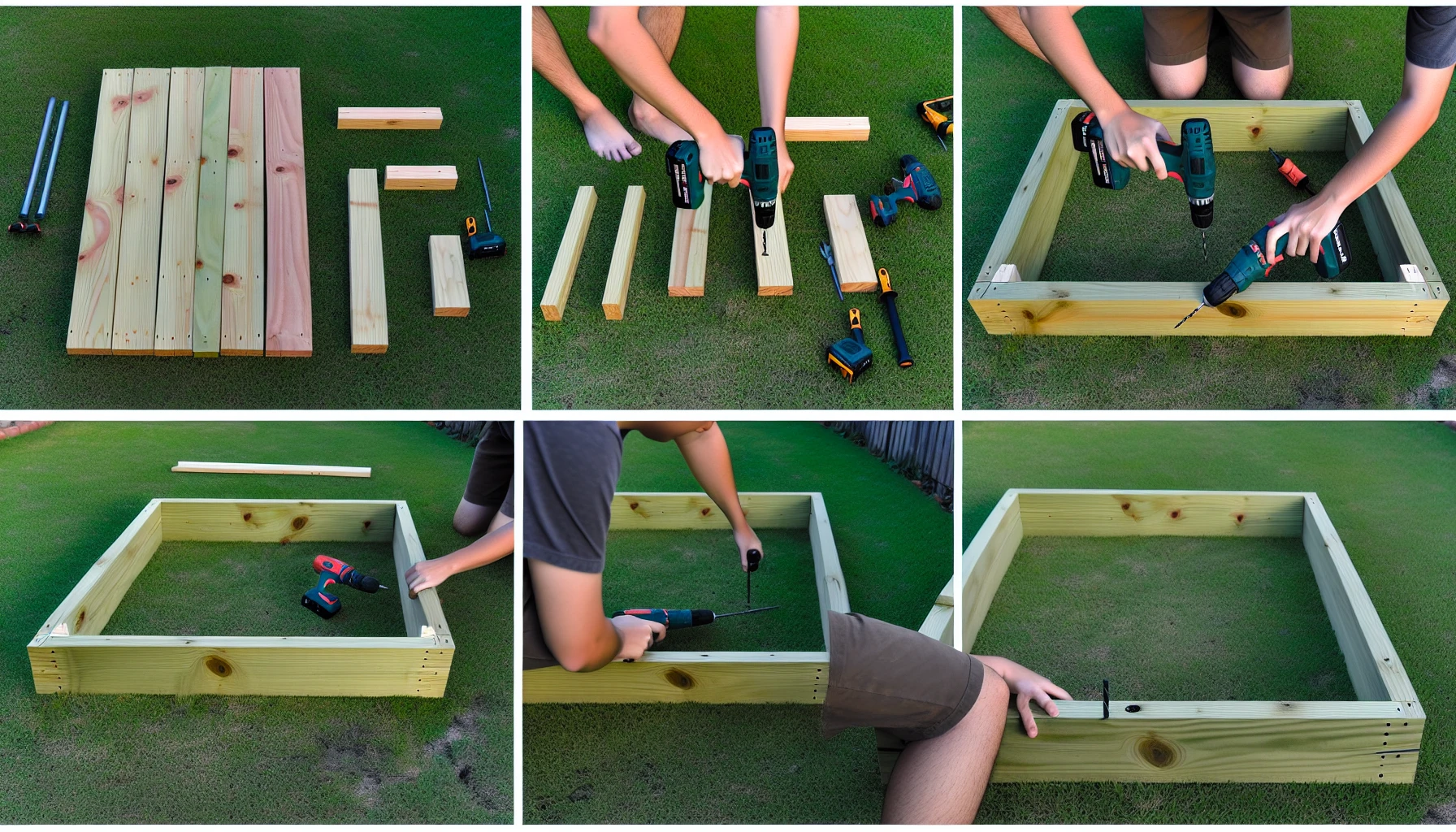
This detailed guide will guide you through each stage of constructing your 4×4 raised garden bed, starting from:
- Ground preparation
- Frame assembly
- Addition of hardware cloth
- Addition of weed barrier
With a little time and effort, you’ll have a beautiful and functional raised garden bed ready for planting.
Preparing the Ground
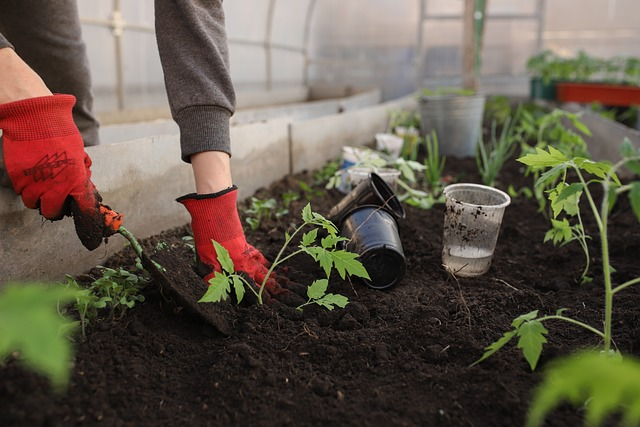
Before constructing your raised garden bed, you’ll need to prepare the ground. Start by removing the sod from the area where your garden bed will be placed. Several methods can help you remove the sod, such as:
- Using hand tools like a trowel, hand hoe, or yankee weeder
- Solarizing the area with clear plastic
- Killing the grass in place with cardboard, newspaper, or herbicides.
Once the sod is removed, leveling the ground beneath the raised garden bed is essential to maintain the structural integrity of the box and keep the soil in place. Use the following tools to level the ground:
- Shovel
- Mattock
- Square spade
- Round point shovel
- String line and string level
- Tape measure
- 2’ level (or longer)
- Mallet
After leveling the ground, mark the bed’s location to ensure it is positioned in the desired spot. Now you’re ready to assemble the frame of your 4×4 raised garden bed!
Assembling the Frame
Assembling the frame of your 4×4 raised garden bed involves cutting lumber to size, attaching corner connectors, and securing the boards together. Cedar is an ideal choice for the frame, as it is built to last and offers excellent durability. To cut the lumber precisely, you’ll need tools like a saw (circular or handsaw), a drill/driver, a measuring tape or ruler, and a pencil or marker.
When it comes to attaching corner connectors, you have a few options:
- Use metal corner brackets for a sturdy structure.
- Nail the corners together for a more traditional look. To secure the boards together, follow these steps:
- Line up the boards, ensuring they are straight and flush at both ends.
- Attach them with screws or bolts. Hex screws, washers, and nuts, or any other screws suitable for outdoor use will do the job. Having a partner to hold the boards steady while you secure them is also a great idea.
With the frame assembled, the next step is to add hardware cloth and weed barrier to your 4×4 raised garden bed.
Adding Hardware Cloth and Weed Barrier
Hardware cloth and weed barrier play essential roles in preventing weeds and pests from infiltrating your raised bed.
To install hardware cloth in your 4×4 raised garden bed, follow these steps:
- Measure the bed’s dimensions.
- Cut the cloth to fit.
- Secure it to the sides with galvanized staples or nails.
- Trim any excess.
Hardware cloth, also known as wire mesh or gopher wire, is a mesh wire screen made from galvanized steel that protects plants from ground-dwelling rodents while allowing water and nutrients to flow through the soil.
A weed barrier is a material used to stop weed growth in a garden bed. Installing a weed barrier in your 4×4 raised garden bed involves the following steps:
- Measure the bed’s dimensions.
- Cut the fabric to fit the bed.
- Secure the fabric to the sides with staples or nails.
- Trim any excess fabric.
- Add soil before planting.
With your 4×4 raised garden bed built and protected from weeds and pests, it’s time to explore planting tips to ensure a thriving garden.
Planting Tips for a 4×4 Raised Garden Bed
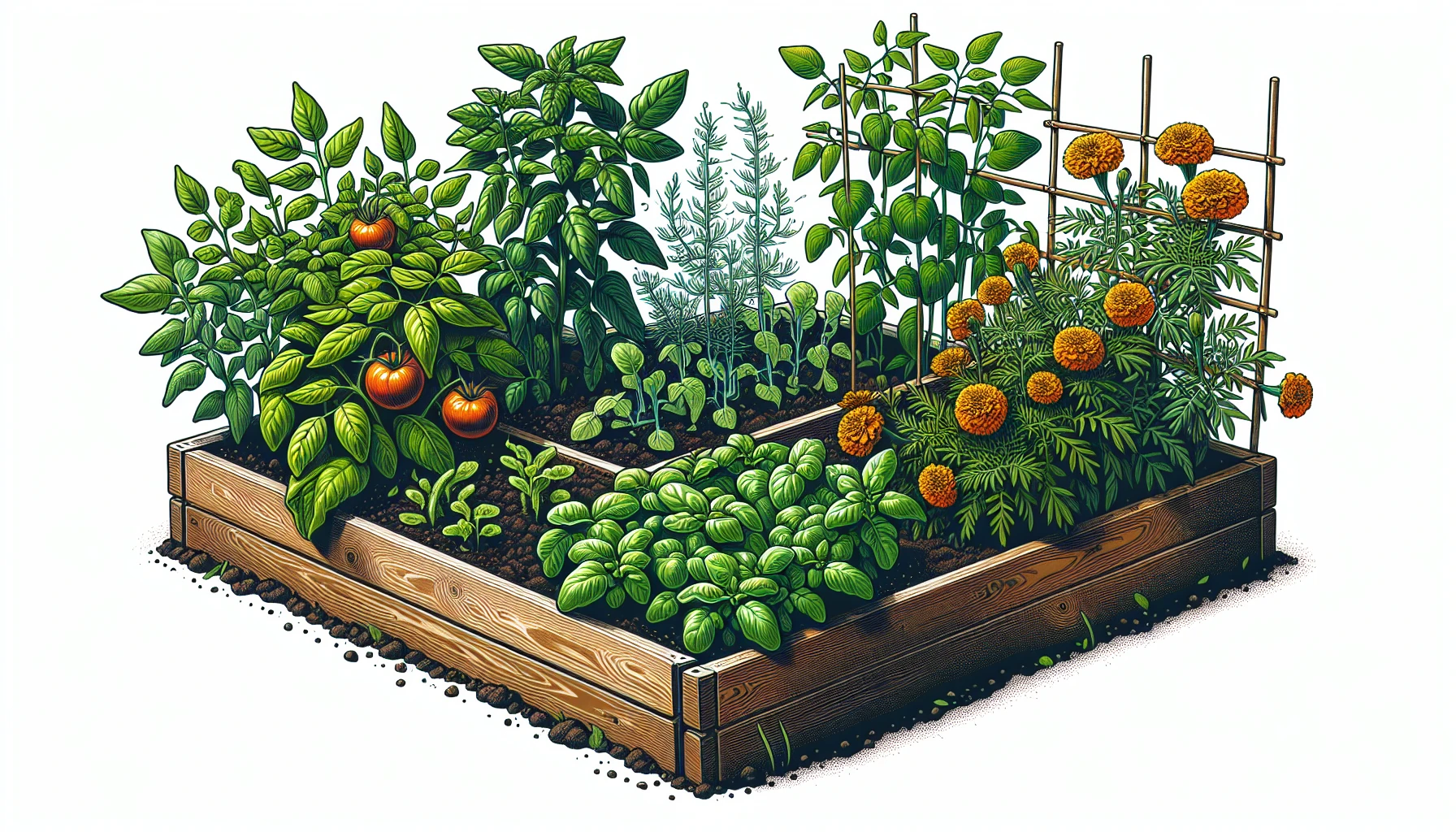
To fully utilize your 4×4 raised garden bed, adhering to the correct planting guidelines is a must. Start by ensuring that you space your plants strategically, leaving about 18 inches to 2 feet between rows for optimal growth and access to sunlight, water, and nutrients. Proper plant spacing also promotes good air circulation, reducing the risk of fungal infections and ensuring overall plant health.
Companion planting is another exciting opportunity to maximize growth and health in your 4×4 raised garden bed. By planting corn, beans, and squash together, you can enjoy a thriving garden as they complement each other’s growth. Additionally, adding flowers and herbs like:
- marigolds
- nasturtiums
- basil
- cilantro
can attract beneficial insects and deter pests.
Crop rotation is another essential aspect of successful gardening in a 4×4 raised garden bed. By creating multiple distinct raised beds or plots, you can easily rotate plant families around each bed, planting the same botanical family in the same raised bed only once every four years. This practice helps you avoid potential pests, diseases, and soil issues, ensuring a flourishing garden.
When selecting plants for your 4×4 raised garden bed, consider the following varieties:
- Basil
- Zinnias
- Kale
- Bell peppers
- Tomatoes (determinate variety)
- Bush beans
- Zucchini
These plants are well-suited for this type of garden bed. With these planting tips in mind, your garden bed is set to thrive!
Irrigation Solutions for Your 4×4 Raised Garden Bed

Adequate irrigation is key to the success of a 4×4 raised garden bed. Some options for ensuring adequate water supply for your plants are:
- Self-watering planters: These are sub-irrigation systems that eliminate the need for drip lines or a water source, only requiring refilling every few months. They can save you water, reduce the need for frequent watering, and protect your plants from hungry critters.
- Drip irrigation systems: These systems deliver water directly to the roots of your plants, minimizing water waste and ensuring efficient watering.
- Soaker hoses: These hoses release water slowly and evenly along their length, allowing the water to seep into the soil and reach the roots of your plants.
By using one of these irrigation methods, you can ensure that your plants receive the water they need for healthy growth.
Drip irrigation systems are another efficient and effective way to deliver water directly to the roots of plants, using a network of pipes, emitters, and valves. These systems can significantly reduce water waste while ensuring that your plants receive the hydration they need to thrive.
Soaker hoses, on the other hand, are designed to slowly and effectively release water along their length. These hoses are an excellent tool for gardens and flower beds, providing a steady supply of water to plants and helping them flourish.
With the right irrigation solution in place, your 4×4 raised garden bed will be well on its way to a bountiful harvest.
Maintaining Your 4×4 Raised Garden Bed
Proper maintenance is vital to keep your 4×4 raised garden bed flourishing. Here are some tips to help you maintain your garden bed:
- Regular watering is crucial, providing 1 to 2 inches of water per week without overwatering, which can promote shallow root growth.
- Fertilizing your garden bed a week or two before planting ensures optimal nourishment for your plants, allowing the fertilizer to mellow out and be absorbed by the plants for the best results.
- Organic fertilizers, such as compost, manure, bone meal, blood meal, worm castings, guano, and fish fertilizer, are great options for maintaining a healthy raised garden bed.
Pruning is another essential aspect of maintaining your 4×4 raised garden bed. Regular trimming encourages healthy, tender new growth and prevents plants from becoming woody. In addition to pruning, it’s crucial to protect your garden bed from pests. Using natural pest control methods like diatomaceous earth, neem oil spray, and natural pesticides, along with garden bed covers and fences to deter critters, can help ensure your plants thrive.
Customizing Your 4×4 Raised Garden Bed

Your 4×4 raised garden bed need not conform to a standard design. With a little creativity, you can customize your garden bed to suit your unique needs and preferences. Some ideas for customization include:
- Adding trellises for climbing plants
- Incorporating decorative elements such as statues or ornaments
- Adjusting the height of the bed for easier accessibility
These customizations can make your garden bed stand out and add a personal touch to your gardening space.
A tiered raised garden bed is a beautiful and functional way to customize your garden. By using cedar fencing, 24’s, and braces, you can create a stunning tiered garden bed with a built-in trellis for climbing plants. This design not only adds visual interest to your garden but also maximizes the vertical space for growing more plants.
Another customization option is adding a tomato cage trellis to your 4×4 raised garden bed, providing support for your tomato plants and other climbing vegetables and flowers. By customizing your 4×4 raised garden bed, you can create a truly unique and personalized gardening space.
Troubleshooting Common Issues with 4×4 Raised Garden Beds

While constructing and caring for a 4×4 raised garden bed, you might come across typical issues like inadequate drainage, lack of nutrients, and pest infestations. To troubleshoot poor drainage, you can:
- Add mulch around your plants
- Locate the bed in a spot with proper water drainage
- Use materials like wood chips or cardboard at the bottom
- Create a drainage channel
- Avoid materials that impede drainage, such as weed-blocking plastic or rubber mulch.
Nutrient deficiencies in raised garden beds can be identified by visually inspecting your plants for symptoms like yellowing leaves, stunted growth, or poor fruit production. To treat these deficiencies, you can use wood ash or potash to increase potassium levels in the soil, or add nutrient-rich fertilizers to address specific issues related to plants roots.
Pest problems in a 4×4 raised garden bed can be addressed by using natural pest control methods such as diatomaceous earth, neem oil spray, and natural pesticides, or by installing garden bed covers and fences to deter critters. By troubleshooting these common issues, you’ll be well on your way to a thriving and bountiful 4×4 raised garden bed.
Summary
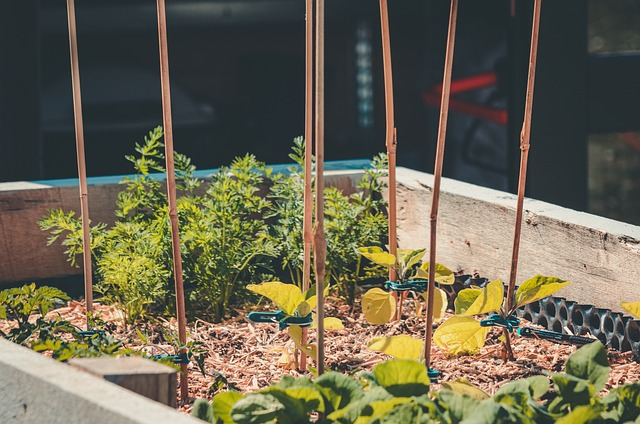
A 4×4 raised garden bed is an excellent solution for those with limited space who want to grow their own vegetables, herbs, and flowers. By choosing the right location and materials, building a sturdy and functional frame, and following proper planting and irrigation techniques, you can create a thriving garden bed that maximizes your harvest.
We hope this blog post has inspired you to embark on your own 4×4 raised garden bed journey. With a bit of effort and dedication, you can transform your outdoor space into a bountiful oasis that rewards you with fresh, homegrown produce. So, roll up your sleeves and start building your very own 4×4 raised garden bed today!
Frequently Asked Questions
How many plants can fit in a 4×4 raised bed?
You may be surprised to learn that a four by four foot raised bed can fit up to twenty plants! Keep a few tips in mind and you can make the most of your space.
Is it cheaper to make or buy raised garden beds?
It is cheaper to make your own raised garden bed, costing around $25-50 per square foot, than it is to hire a professional to build and install one for you which will cost at least $100 per square foot.
What is the least expensive way to build a raised garden bed?
The least expensive way to build a raised garden bed is to do it yourself with recycled/upcycled materials such as untreated wood pallets or cedar wood.
How much soil do I need for a 4×8 raised garden bed?
To fill a 4×8 raised bed, you’ll need around 24-36 cubic feet of soil, depending on the desired depth. The exact amount may vary depending on the type of soil you use.
What is the ideal location for a 4×4 raised garden bed?
For a successful 4×4 raised garden bed, choose a level spot with lots of sunshine and good drainage. Make sure it’s easily accessible so you can enjoy and tend to it frequently!


